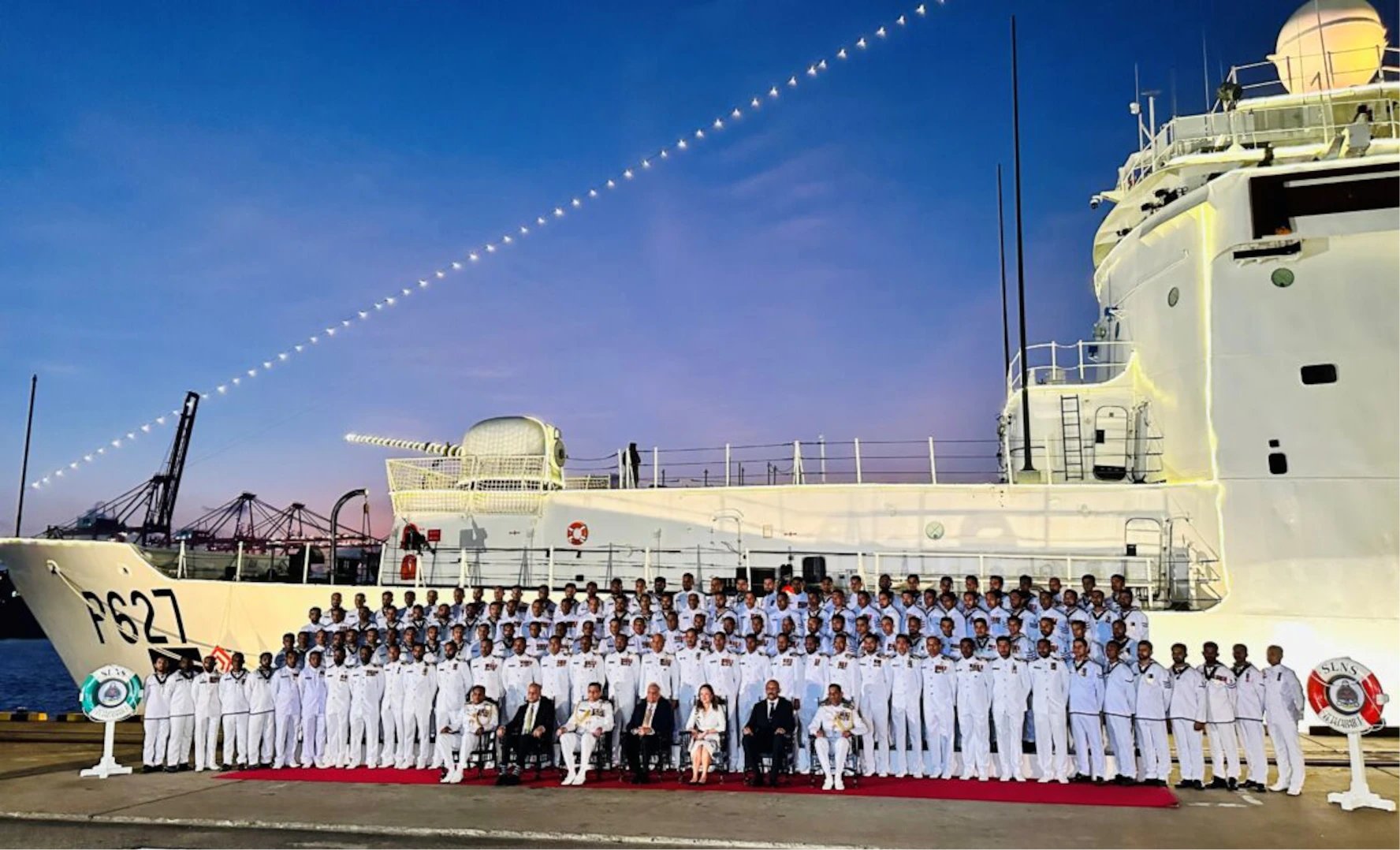Breaking news
Sri Lanka Navy commissions Ex Hamilton class cutter Vijayabahu donated by US.
According to information published by the US DoD on November 23, 2022, the President of Sri Lanka Ranil Wickremesinghe, the Secretary to the MoD Kamal Gunaratne, the Commander of the Sri Lanka Navy Vice Admiral Nishantha Ulugetenne, and the U.S. Ambassador to Sri Lanka Julie Chung attended the commissioning of the Navy Ship Vijayabahu, formerly the U.S. Coast Guard Cutter Douglas Munro, in Colombo Harbor.
Follow Navy Recognition on Google News at this link
 Commissioning ceremony of the ex-Hamilton-class High Endurance Cutter Vijayabahu. (Picture source: US DoD)
Commissioning ceremony of the ex-Hamilton-class High Endurance Cutter Vijayabahu. (Picture source: US DoD)
The United States had donated the ship to Sri Lanka on October 26, 2021 as part of its continuing commitment to strengthen Sri Lanka’s ability to protect its maritime sovereignty and security.
Viewing the commissioning ceremony with Sri Lankan dignitaries, Ambassador Chung extended her appreciation to the ship’s officers and sailors for their skillful handling of the ship during the voyage. She also expressed her thanks to the families and loved ones of the sailors for their sacrifice during the crew’s long absence.
Sri Lanka’s Exclusive Economic Zone (EEZ) is seven times the size of its land area and maintains a Search and Rescue area nearly 25 times as large. The new vessel is capable of performing wide-ranging operations that include conservation of marine resources, search and rescue of naval and fishing vessels in distress and interdiction of drug and weapons smuggling among other crucial functions.
The Vijayabahu is the third ship donated by the United States to the Sri Lanka Navy, preceded by the Gajabahu in 2018 and the Samudura in 2004, which continue to patrol the nation’s waters.
The latest ship, a former Hamilton-class high-endurance 115-meter cutter, undertook one of the longest voyages in Sri Lankan naval history embarking from Seattle, Washington, on September 3 and arriving in Colombo on November 2, 2022.
In its former U.S. role, the then-Douglas Munro enforced fishing regulations in Alaskan waters, seized trawlers engaged in illegal practices and interdicted 11.5 tons of cocaine off the coast of Mexico, one of the largest hauls in the history of the U.S. Coast Guard.
After the 2004 tsunami, the cutter provided food and water to Indonesians and later seized a vessel overtaken by pirates off the Horn of Africa. The ship also rescued survivors of numerous shipwrecks in dangerous and frigid waters off the Alaskan coast.
About the Hamilton class
The Hamilton-class cutter was the largest class of vessel in the United States Coast Guard until replaced by the Legend-class cutter, aside from the Polar-class icebreaker.
The Hamilton-class cutters were designed to be a highly versatile platform capable of performing various operations, including maritime law enforcement, search and rescue, oceanographic research, and defense operations.
They were built with a welded steel hull and aluminum superstructure. The Hamilton-class cutters' hull was designed with a V cross section, and through tank testing the hull was expected to survive and stay afloat longer after suffering damage.
They are powered by a Combined Diesel or Gas (CODOG) system consisting of two diesel engines and two gas turbines, and have controllable-pitch propellers, they were the first U.S. military vessels with combination diesel or gas turbine operation. Equipped with a helicopter flight deck, retractable hangar, and the facilities to support helicopter deployment.


























